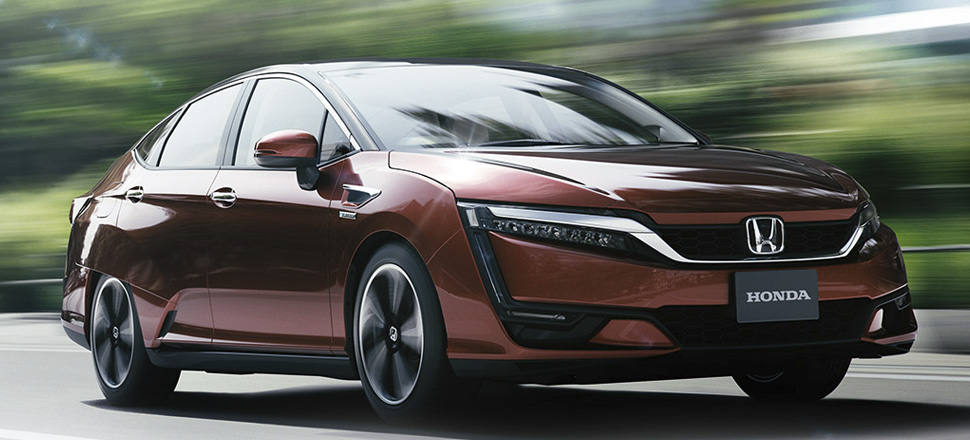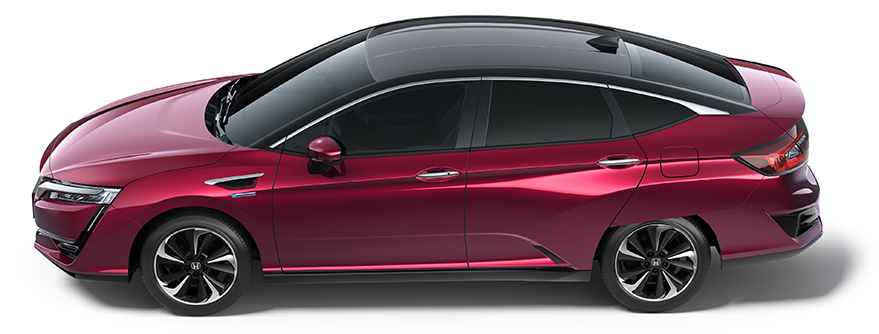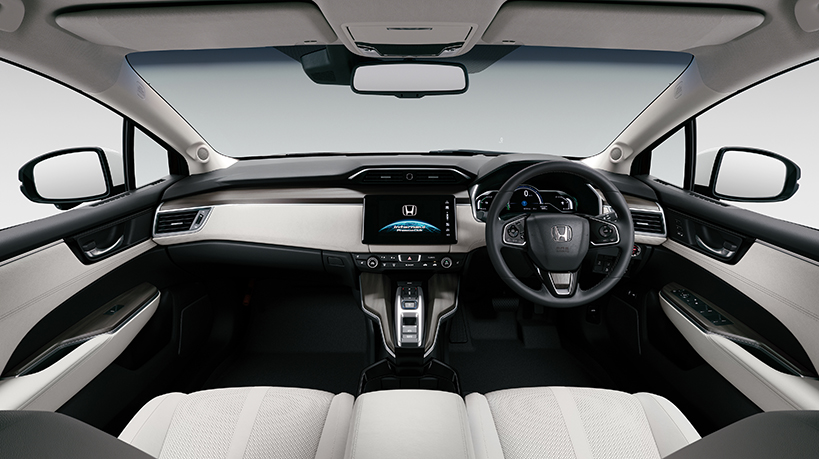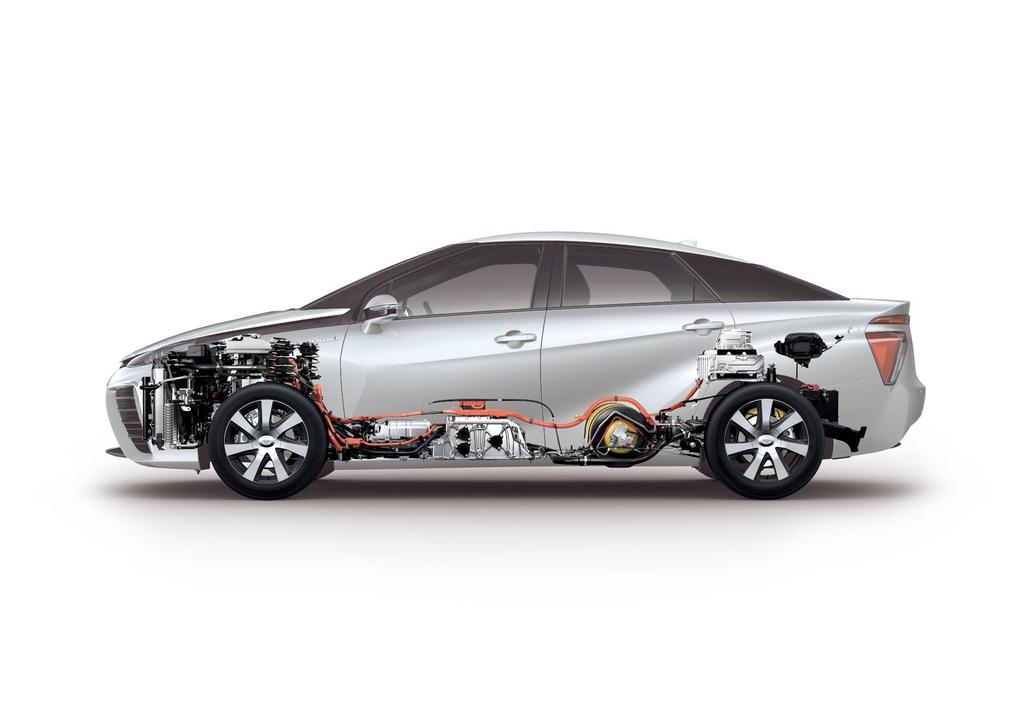 |
 11-18-2015, 12:52 PM
11-18-2015, 12:52 PM
|
#1
|
|
Registered Member

Join Date: Mar 2012
Posts: 251
Country: Canada
Location: Halifax
|
2017 Honda Clarity Hydrogen Car
I remember when I watched The Day After Tomorrow movie in 2004 and during that time everybody was like: “we need to save this planet, we need to drive hybrid cars and protect the polar bears, etc.” So Honda at that time came out with the very first hybrid car the Honda Insight (this was featured in the movie), the car was all aluminum and a great little car that was very efficient. After the car came out, people were like: “we don’t want this, it looks weird and it’s slow and expensive”; and they went back driving their SUVs and cross overs. I find it ironic that Honda was the first manufacturer to sell a hybrid, yet Toyota cashed in on the hybrid cars with the Prius. Leonardo DiCaprio bought two Priuses (Prii) when it came out; not one but two. That’s like saving the environment twice! Later Honda changed the Insight to have four doors and look like a Prius, but it didn’t matter, the Insight was phased out of production in 2014 without anyone noticing. Again, Honda was the first to lease hydrogen cars to people in 2010, but Toyota will probably cash in on hydrogen cars in the future starting with the ’15 Mirai. I’m saying in the future because I’m pretty sure they are currently selling the Mirai at a loss. Nevertheless, this is the new Honda Clarity hydrogen car that you will be able to buy next year. I usually hate Japanese styling that tend to look like a mishmash of 10 different designs, but I…kind of…..like the look of this new Clarity. I don’t know why but it reminds me of French cars, which is good because I like French cars. The front kind of looks like a Renault Laguna and the back has a Citroen feel to it.




Toyota Mirai for comparison:

|

|

|
 11-18-2015, 04:23 PM
11-18-2015, 04:23 PM
|
#2
|
|
Registered Member

Join Date: Nov 2013
Location: Houston, Tx
Posts: 111
Country: United States
Location: Houston, Tx
|
wonder if one person with two hybrids is twice as good ?
__________________
__________________


|

|

|
 11-18-2015, 05:21 PM
11-18-2015, 05:21 PM
|
#3
|
|
Registered Member

Join Date: Mar 2012
Posts: 251
Country: Canada
Location: Halifax
|
"In America, we like everyone to know about the good work we're doing anonymously." Jay Leno (referring to Prius drivers)
|

|

|
 11-18-2015, 11:11 PM
11-18-2015, 11:11 PM
|
#4
|
|
Registered Member

Join Date: Aug 2009
Posts: 3,387
Country: United Kingdom
Location: Mid Wales
|
The Prius arrived in 1998 and the Insight MK1 arrived in 1999 so they were closer than you think. Obviously the Toyota sold better. Quite a few manufacturers developing hydrogen fuel cell cars, strangely it's Hyundai that already have several hydrogen cars on the road here in the UK already. Never been a big believer in Hybrids, they generally give less mpg than diesels so, other emissions aside, thier C02 emissions are just as high (the greenhouse gas Europe has been trying to slash)
Any step away from fossil fuels is a step in the right direction.
|

|

|
 11-19-2015, 05:11 AM
11-19-2015, 05:11 AM
|
#5
|
|
Registered Member
Join Date: Nov 2007
Posts: 1,853
Country: United States
Location: north east PA
|
The first Prius came out in Japan in 1997. Honda can claim to have the first hybrid in North America, but by less than a year. The original Insight was a MPG champ, but it was only a two seater. The all aluminum body meant Honda was likely losing more per car than Toyota was on the Prius.
The Prius was cleaner in terms of directly harmful emissions(SULEV vs ULEV), but its rear seat is what really got it more attention than the Insight. The gen2 arrived in 2004 and it the model became a small mid-size with the utility of a hatchback and better fuel efficiency. The climbing gas prices didn't hurt.
The Insight2 was a decent hybrid, but, in hindsight, it did suffer from Prius envy. Honda would have been better off skipping it, and just bringing over the hybrid Jazz/Fit that it was based on. The ICE Fit is a strong seller here.
First off, while I think the fuel cell can have a future in personal transportation, using hydrogen for fuel in any car is a non-starter for the US because of infrastructure costs. Costs also mean that most hydrogen will just be a switch to a different fossil fuel instead of away. In the US it will be natural gas, which could conceivably switch to renewable methane in the future. Japan, though, is planning to take Australian brown coal, convert it into hydrogen, and then ship it to home. The plan uses carbon sequestering, but it doesn't catch all, and, like using renewables, adds cost.
The Mirai has a lower cost than the first Clarity, but the next Clarity should be a better car than the Mirai with better fuel economy and range. At the very least it will have 5 seats. And it was designed without GM's help or patents, so the FCEV after it will be even better. It will also have a lower cost than the Mirai. Not because the FC will cost less, but because Honda is also planning a BEV and PHV on the same platform.
|

|

|
 |
 Posting Rules
Posting Rules
|
You may not post new threads
You may not post replies
You may not post attachments
You may not edit your posts
HTML code is Off
|
|
|
|
 » Car Talk & Chit Chat
» Car Talk & Chit Chat |
|
|
|
|
|
|
|
|
|
|
 » Fuelly iOS Apps
» Fuelly iOS Apps |
|
No Threads to Display.
|
 » Fuelly Android Apps
» Fuelly Android Apps |
|
|
|